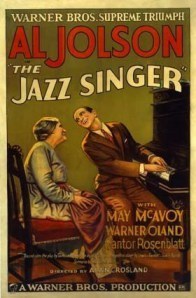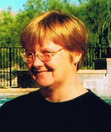1920s Reference Party
I admit it. I got to be something of a 1920s geek while I was doing research for Speakeasy Dead. I read stacks of books, watched every vaguely 1920s movie I could get my hands on, binged on Boardwalk Empire, Downton Abbey, Jeeves & Wooster, and more! By the time the book was done I’d made myself a mental 1920s pied-à-terre that I like to roar up to in my 1922 Nash touring sedan and visit every once in a while. And so by way of keeping the party alive, I thought I’d post a guide to the references in Speakeasy Dead, just for the pathologically curious.
If you’ve read the book, you may find these addenda interesting. And if you haven’t, why, what are you waiting for? More fun than laughing gas and—at a list price of only a couple of bucks—you get a genuine 1920s bargain!
Speakeasy Dead Historical References
Chapter One: Follow the Swallow/Al Jolson

All Speakeasy Dead chapters start with song titles from 1924 or earlier and most have something to do with what’s going on in the story. The song Follow the Swallow was popularized by Al Jolson, later of Jazz Singer fame. Like many Vaudeville performers, Jolson was known for performing in “blackface” – an exaggerated/comic African-American look achieved by covering the face with burnt cork – adopted even by black performers. (There’s nothing quite like the 1920s for unabashed racism…but that’s the subject for another post.)
Jolson reputedly had a bad temper and an insatiable need to be admired as even Eddie Cantor, who rarely has a cross word for anyone, gently remarks in his memoirs. Today Jolson’s performances sound hammy, but at the time audiences adored him and he is supposed to have had a commanding stage presence.
Did you know The Jazz Singer, released in 1927, wasn’t the first talkie? Only the first feature film originally presented as a talkie. Hollywood had been flirting with various sound technologies for years, as you can see in A Few Moments with Eddie Cantor, a cute example from way back in 1923. But the studios dragged their feet, partly because there were issues with quality, but mostly because they didn’t want to lose overseas profits by tying films to the English language. In fact, The Jazz Singer isn’t even all sound. It’s a hybrid silent/talking picture with a few sequences of dialog and six songs sung by Jolson. There are several high-quality prints and excerpts of The Jazz Singer available on YouTube.
The Jazz Singer, released in 1927, wasn’t the first talkie? Only the first feature film originally presented as a talkie. Hollywood had been flirting with various sound technologies for years, as you can see in A Few Moments with Eddie Cantor, a cute example from way back in 1923. But the studios dragged their feet, partly because there were issues with quality, but mostly because they didn’t want to lose overseas profits by tying films to the English language. In fact, The Jazz Singer isn’t even all sound. It’s a hybrid silent/talking picture with a few sequences of dialog and six songs sung by Jolson. There are several high-quality prints and excerpts of The Jazz Singer available on YouTube.
Upcoming Events:
Next week I’ll be doing my first ever cross-promotions with other indie urban fantasy/paranormal romance authors. Speakeasy Dead will be part of a December 10-13 Kindle-Boards blog-hop, and Keys to the Coven will be included in the I Read Fantasy promo December 11-14. Both books will be Kindle-Countdown priced at 99-cents from December 10-16, and there will be lots of other discounted fantasy books available as well, so check back and click.
You don’t have enough to read on your kindle…right?
Want more?
Bill Bryson’s One Summer: America, 1927 has a good discussion of The Jazz Singer and talking pictures.
Sign up for Vicky’s Newsletter. Why? My new releases are value-priced at 99-cents the first three days after publication, especially as a thank-you to subscribers. I also occasionally join with other Fantasy/Romance writers to cross-promote — always at a discount, and always with PRIZES! You can’t go wrong!





